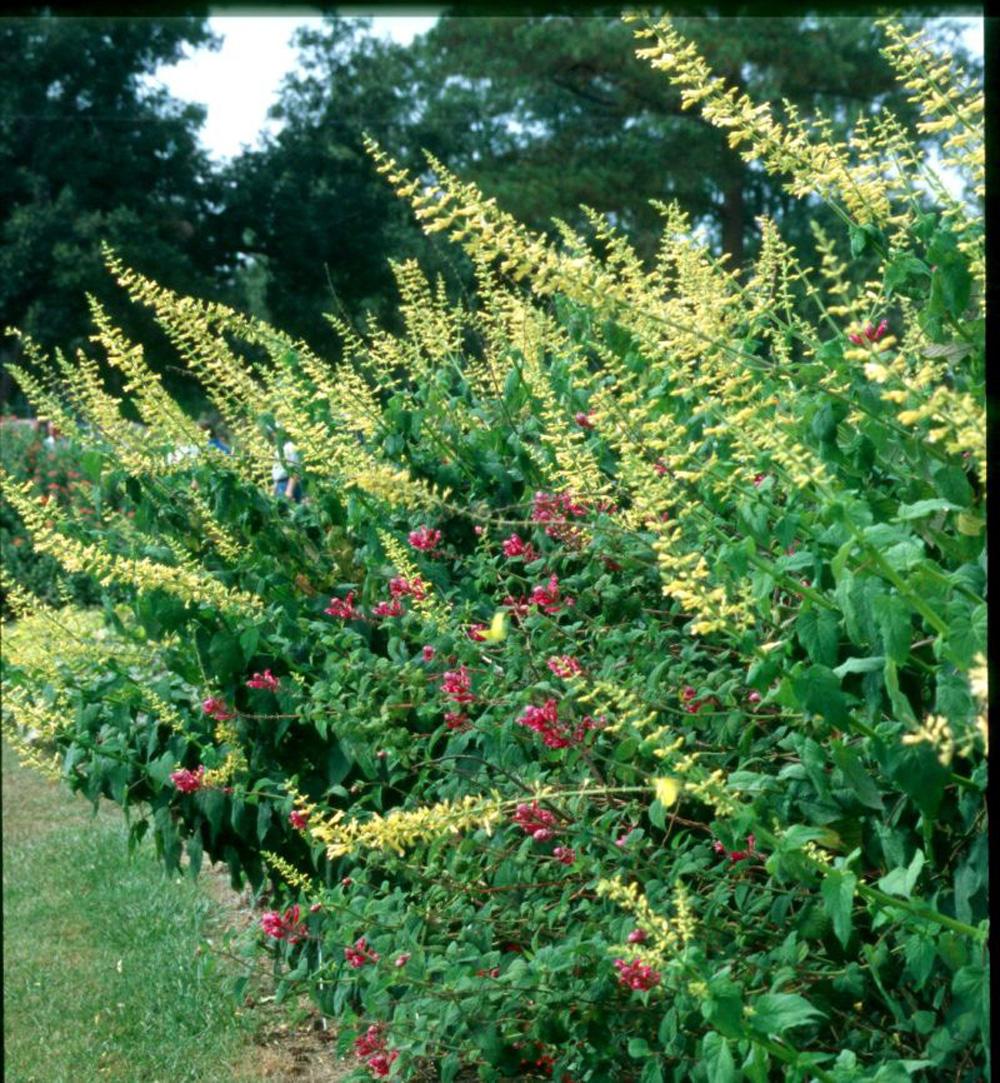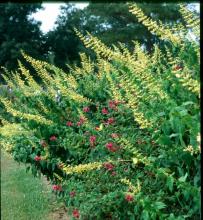Information Possibly Outdated
The information presented on this page was originally released on October 28, 2004. It may not be outdated, but please search our site for more current information. If you plan to quote or reference this information in a publication, please check with the Extension specialist or author before proceeding.
Fall salvias show out, attract hummingbirds
By Norman Winter
MSU Horticulturist
Central Mississippi Research & Extension Center
I always like to go back to the Truck Crops Experiment Station after the Fall Flower and Garden Fest. It's kind of like going back on the football field after winning the game.
The hummingbirds seem happy now that the 6,000 visitors are gone, but they sure put on a show for them during the Fest. One plant they were really feasting on was the forsythia sage, known botanically as Salvia madrensis.
Also showing out in the garden is the Salvia leucantha, or Mexican bush sage, known as Kathy Ann Brown. You often see it sold with only the initials KAB, which lead most to think it is called cab, like a taxi.
The look on the faces of gardeners who see the forsythia sage for the first time is priceless. This short-day or long-night bloomer reaches 6 to 7 feet with monolithic proportions, topped by bright yellow blossoms reaching 12 to 24 inches in length.
The forsythia sage's tall stature makes it a great companion for the dwarf 2- to 3-foot Kathy Ann Brown, which features dark lavender flower spikes.
These two salvias are just a sampling of those that really strut their stuff during the fall. They both are hardy from zones 7b to 9 and prefer full sun, though some shade is tolerated. The soil should be very well drained. Plant on raised beds or amend heavy soils with compost or humus. Well-drained soil may encourage a return further north than expected.
While preparing the soil, incorporate 2 pounds of a slow-release 12-6-6 fertilizer per 100 square feet of bed space. Space the forsythia sage 24 to 36 inches apart and the Kathy Ann Brown slightly closer.
Do not plant either of these under streetlights or floodlights because they bloom in response to the number of dark hours. Give them supplemental water during long dry periods. In the fall after significant frost damage, prune to ground level and add a layer of mulch for winter protection.
Feed them a light application of fertilizer in the spring with the emergence of growth and every six to eight weeks through September. The forsythia sage can be pinched or pruned once or twice during the summer to increase the number of blooming stems in the fall.
Divide or transplant volunteers in the spring when sprouts are small. I have moved large plants, however, with good success.
The forsythia sage is definitely for the back of the border. Plant the Kathy Ann Brown in front, or use other salvias like indigo spires or pineapple sage. Ornamental grasses also make great companions.
The forsythia sage is most often sold generically, but the variety Dunham that shows up occasionally is known for superior cold-hardiness.
The flower spikes of the Kathy Ann Brown make superb cut flowers. They are also excellent for drying. Harvest several and tie with sprigs of rosemary and hang upside down in the kitchen for a cottage look.
The fall garden can be as showy as the spring and summer garden, but it is hard to imagine it being so without the use of several perennial salvias like the forsythia sage and the dwarf Mexican bush sage known as Kathy Ann Brown.








